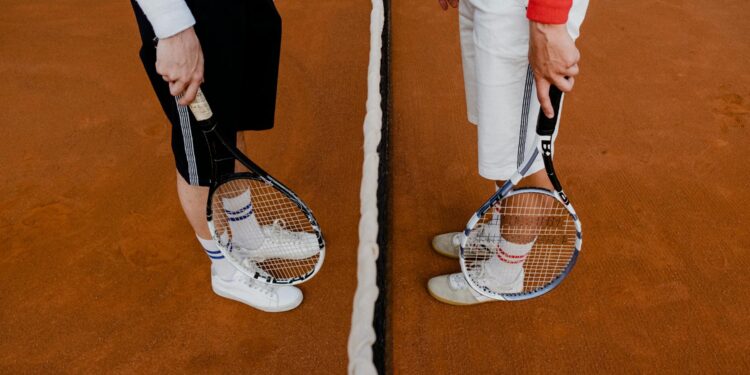Jannik Sinner Wins Historic Nitto ATP Finals Title with Tactical Masterclass
In a thrilling showdown at the Nitto ATP Finals, Jannik Sinner showcased his dominance over Taylor Fritz, winning both their final and round-robin matches with identical scores of 6-4, 6-4. How did Sinner achieve this feat? Let’s dive into the details.
Key Takeaways
- Jannik Sinner’s dominance in short rallies paved the way for his victory.
- Sinner’s serve efficiency and tactical prowess were unmatched.
- Taylor Fritz’s strategic missteps hindered his performance.
- Sinner’s historic achievement as the first Italian champion at the Nitto ATP Finals.
- The future outlook for both players shows promise and areas for improvement.
Jannik Sinner’s Dominance in Short Rallies
Sinner demonstrated his consistent superiority in short rallies. In the final, he held a 46-40 advantage in points during short rallies, mirroring his 43-37 edge in the round-robin match. This dominance in short rallies was crucial, as 74% of the points in the final were played in these quick exchanges.
Tactical Breakdown
Sinner’s tactical approach revolved around first-strike tactics, emphasizing effective Serve +1 strategies. For fans following tennis odds, this level of strategic precision demonstrates why Sinner is often a favorite in key matchups.
His forehand emerged as a key weapon, winning an impressive 75% of Serve +1 forehands. In contrast, Fritz struggled to adapt, lacking a solid Plan B to counter Sinner’s tactics. This inability to adjust his strategy was a significant factor in his defeat.
How Did Sinner Win Against Fritz?
One of the cornerstones of Sinner’s victory was his serve efficiency. He boasted a high first-serve win percentage of 83% and fired 10 aces in the first set alone. This formidable serve performance set the tone for the match, allowing Sinner to dictate play from the outset.
Rally Analysis
Sinner’s dominance extended beyond his serve, as he excelled in short rallies (0-4 shots) with a 74% point share. He also held a slight edge in mid-length (5-8 shots) and long rallies (9+ shots), showcasing his all-around game. His ability to win points quickly and efficiently was a testament to his tactical acumen.
The Strategic Missteps of Taylor Fritz
Taylor Fritz faced significant challenges in countering Sinner’s tactics. His Serve +1 struggles were evident, with only a 53% win rate on forehands. Despite a high success rate at the net, winning 7 out of 8 points, Fritz missed opportunities to capitalize on this advantage. His reluctance to come forward more often limited his options and played into Sinner’s hands.
Baseline Battle
Fritz’s baseline performance was another area of concern. He won only 37% of baseline points in the final, highlighting his struggle to gain control from the back of the court. His over-reliance on backhands, hitting 87 compared to 69 forehands, further restricted his ability to dictate play.
Sinner’s Historic Achievement
Jannik Sinner’s victory at the Nitto ATP Finals marked a historic achievement as he became the first Italian champion in the tournament’s 55-year history. Remarkably, he won the title without dropping a set, a feat last achieved by Ivan Lendl in 1986.
Stellar Season Recap
Sinner’s triumph capped off a stellar season, where he achieved a 50-3 record on hard courts in 2024. He joined the elite company of Roger Federer and Novak Djokovic by winning the Australian Open, US Open, and Nitto ATP Finals in the same season. Sinner’s consistent excellence throughout the year solidified his status as a top player on the tour.
The Future Outlook for Both Players
Jannik Sinner
Jannik Sinner’s future looks incredibly promising. With a year-end World No. 1 ranking and an 11-match winning streak, he is poised for continued success. His undefeated run at the tournament underscores his ability to perform consistently at the highest level.
Taylor Fritz
Despite the loss, Taylor Fritz has reason to be optimistic. He achieved a career-high No. 4 ranking, reflecting his progress throughout the season. However, areas for improvement remain, particularly in developing alternative strategies and increasing net play. Addressing these aspects could elevate his game to new heights.
Conclusion
Jannik Sinner’s tactical superiority and consistent performance were key to his victory over Fritz. While Sinner’s serve and forehand proved decisive, Fritz’s need for strategic adjustments was evident. As both players look to the future, Sinner’s continued dominance and Fritz’s potential for growth promise exciting developments in the tennis world.















